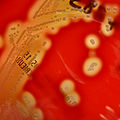Mynd:Diagnostic algorithm of possible bacterial infection.png

Stærð þessarar forskoðunar: 780 × 600 mynddílar Aðrar upplausnir: 312 × 240 mynddílar | 625 × 480 mynddílar | 999 × 768 mynddílar | 1.280 × 984 mynddílar | 2.560 × 1.968 mynddílar | 5.376 × 4.133 mynddílar.
Upphafleg skrá (5.376 × 4.133 mynddílar, skráarstærð: 2,77 MB, MIME-gerð: image/png)
Breytingaskrá skjals
Smelltu á dagsetningu eða tímasetningu til að sjá hvernig hún leit þá út.
| Dagsetning/Tími | Smámynd | Víddir | Notandi | Athugasemd | |
|---|---|---|---|---|---|
| núverandi | 27. júlí 2023 kl. 14:58 |  | 5.376 × 4.133 (2,77 MB) | Mikael Häggström | Correction of group B strep |
| 26. júlí 2023 kl. 22:40 |  | 5.376 × 4.141 (2,78 MB) | Mikael Häggström | Update | |
| 26. júlí 2023 kl. 20:36 |  | 5.376 × 4.181 (2,77 MB) | Mikael Häggström | Update | |
| 25. júlí 2023 kl. 22:54 |  | 5.237 × 4.305 (2,75 MB) | Mikael Häggström | Uploaded a work by {{Mikael Häggström|cat=Medical diagrams}} from {{Own}} with UploadWizard |
Skráartenglar
Það eru engar síður sem nota þessa skrá.
Altæk notkun skráar
Eftirfarandi wikar nota einnig þessa skrá:
- Notkun á en.wikipedia.org
- Gram-negative bacteria
- Streptococcus
- Group A streptococcal infection
- Anaerobic organism
- Enterococcus
- Agar plate
- Streptococcus pneumoniae
- Microbiological culture
- Matrix-assisted laser desorption/ionization
- Pathogenic bacteria
- Staphylococcal infection
- Pseudomonas infection
- CAMP test
- User:L. Elizabeth Turner/Microbiological culture
- Notkun á hy.wikipedia.org

















